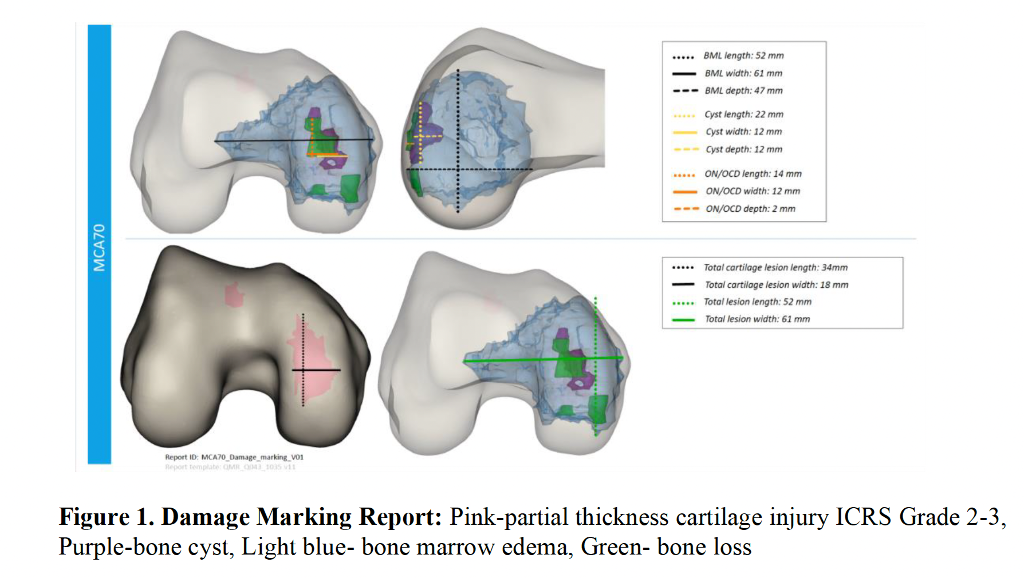S. Moulton (Portland, US)
Oregon Health & Science UniversityPresenter Of 1 Presentation
12.3.3 - Prospective Evaluation of Damage Marking Report Software to Predict Osteochondral Allograft Transplantation Graft Area
Abstract
Purpose
The purpose of this study was to evaluate the accuracy of the Damage Marking Report software (DMR) to correctly predict fresh osteochondral allograft (FOCA) graft area needed for surgery. Our hypothesis was the software would overestimate the area of the defect compared to the graft size used by a clinically acceptable amount.
Methods and Materials
Prospectively collected patient data was retrospectively identified from the two clinical sites. Inclusion criteria included patients 18 years and older who underwent FOCA to the distal femur. Exclusion criteria included defects of the trochlear and patella. MRIs were sent to the Joint Research Foundation for completion of the DMR (Figure 1).
We used nonparametric kernel-based regression to assess DMR variables. Trend curves are reported with 95% confidence bands. A linearized trend estimate was also calculated using Huber-biweight hybrid robust regression. We report the overall prediction performance (R2), regression weight (interpretable as the fraction of the predicted value that was actually used), and prediction accuracy (root-mean-square error).
Results

 A total of 36 FOCA surgeries were performed. The average graft size was 3.40 cm2 (range 1.13-7.07). The DMR overestimated the area of FOCA tissue in 30 subjects including 25 single FOCA grafts and 5 two-graft FOCAs. The DMR underestimated the area of FOCA tissue in 6 subjects including 5 single FOCA grafts and 1 two-graft FOCA. The overall DMR estimate of lesion size was larger than the area of graft used by roughly a factor of 8 (Figure 2).
A total of 36 FOCA surgeries were performed. The average graft size was 3.40 cm2 (range 1.13-7.07). The DMR overestimated the area of FOCA tissue in 30 subjects including 25 single FOCA grafts and 5 two-graft FOCAs. The DMR underestimated the area of FOCA tissue in 6 subjects including 5 single FOCA grafts and 1 two-graft FOCA. The overall DMR estimate of lesion size was larger than the area of graft used by roughly a factor of 8 (Figure 2).
Conclusion
The DMR overestimated the graft area used for the majority of FOCA surgeries including a range of graft area sizes and single and two-graft FOCA surgeries. These results suggest that the DMR modeling software can reliably overestimate the amount of graft needed for FOCA surgery. Reliably overestimating the amount of graft necessary may better refine the amount of allograft required for FOCA surgery.



